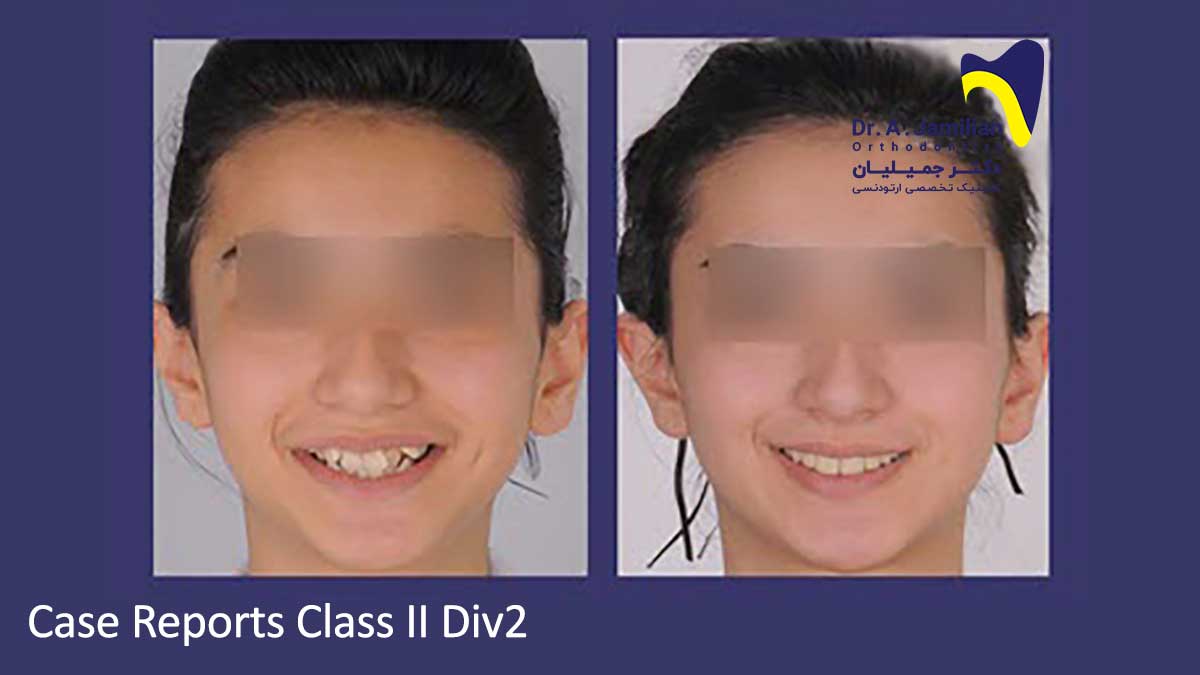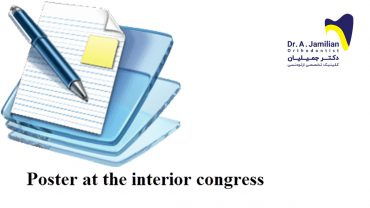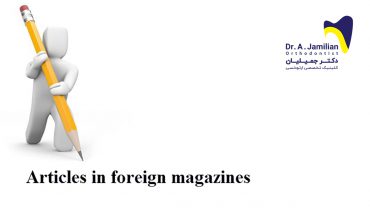Class II Division II
This case report demonstrates an adolescent female patient presenting with Class II Div (2) malocclusion on a moderate Skeletal II base with slight mandibular retrognathia.
Summary:
The patient had severe deepbite and her upper and lower incisors were severely retroclined. Severe maxillo-mandibular anterior tooth crowding could be seen.
Examination of head and face:
On the frontal plane the patient showed a symmetric face with an unpleasant smile due to deepbite and retroclined labial segments. The profile analysis showed a relatively retrusive mandible and her lips were competent.
Functional examination:
The patient had no lateral or sagittal shift of the mandible while opening and closing mouth and there were no temporomandibular joint signs or symptoms. Jaw opening was within normal range and no deviation could be seen upon opening the mouth. The patient had no muscle pain on palpation and centric occlusion and relation were coincident.
Intra-oral examination:
The patient presented with Class II Div (2) malocclusion with retroclined 11, 21, 22 and proclined 12 in the upper jaw and retroclined 31, 32, 41, 42 in the lower jaw with a semi-impacted 35. No caries and fillings could be seen Severe crowding was obvious in both jaws. The soft tissue was normal and no gingival trauma could be seen due to increased overbite. The patient had fair oral hygiene.
Treatment plan:
The patients chief complaints of this Class II Div 2 patient were:
Anterior deepbite
Retroclination of upper incisors
Retroclination of lower incisors
Upper anterior crowding
Lower anterior crowding
The post pubertal age of the patient suggested that mandibular retrognathia could not be corrected orthopedically. This made the treatment of this patient a challenging one since she strongly rejected surgical procedures.
Ø The first treatment phase could be placing an upper removable appliance with a flat anterior bite plate to start overbite reduction. Placing Three Z-springs in the upper removable appliance behind 11, 21, and 22 would procline them.
Ø In order to relieve crowding, the teeth 14, 24, 34, and 44 should be extracted under local anaesthesia.
Ø The second phase includes use of 0.018 standard edgewise appliance for levelling, aligning, decrowding, intruding upper incisors, and detailing tooth position.
Ø Retention could be done by upper anterior bite plate and lower Hawley retainer.
Treatment results:
The objectives were achieved after 28 months of treatment:
A full Class I molar and canine relationship has been achieved. Patient’s severe deepbite and crowding were successfully corrected. A suitable relationship between upper and lower incisors was achieved. Upper and lower incisors’ inclinations were favourably corrected. A favourable interincisal angle relationship was achieved. The mandible was moved slightly forward. Overjet and overbite are normal with correct incisors torque.
The patient was fitted with and upper anterior bite plate in order to counteract the tendency for increase in overbite. In the lower jaw a Hawley retainer was used to ensure adequate retention. These appliances were used in order to maintain treatment results and prevent relapse. The retainers were worn on a full time basis for the first 6 months then on a part time basis after which their use was discontinued.
Retention:
After 13 months out of retention no changes were evident in the orthodontic outcome of the patient. And the patient still had very satisfactory occlusion with good intercuspation. No signs of crowding were detected. The deepbite correction has been maintained as well as the upper and lower arch alignment and inclination. No signs and symptoms of temporomandibular dysfunction were noted.
Cephalometric Data:
| Pretreatment | Posttreatment | Mean SD | ||
| Sagittal Skeletal Relations | ||||
| Maxillary Position S-N-A | 78° | 79° | 82º ± 3.5º | |
| Mandibular Position S-N-Pg | 71° | 75° | 80º ± 3.5º | |
| Sagittal Jaw Relation A-N-Pg | 7° | 4° | 2º ± 2.5º | |
| Vertical Skeletal Relations | ||||
| Maxillary Inclination S-N / ANS-PNS | 11° | 10° | 8º ± 3.0º | |
| Mandibular Inclination S-N / Go-Gn | 31° | 30° | 33º ± 2.5º | |
| Vertical Jaw Relation ANS-PNS / Go-Gn | 20° | 17° | 25º ± 6.0º | |
| Dento-Basal Relations | ||||
| Maxillary Incisor Inclination 1 – ANS-PNS | 93° | 105° | 110º ± 6.0º | |
| Mandibular Incisor Inclination 1 – Go-Gn | 94° | 109° | 94º ± 7.0º | |
| Mandibular Incisor Compensation 1 – A-Pg (mm) | -4 mm | 0 mm | 2 ± 2.0 | |
| Dental Relations | ||||
| Overjet (mm) | 1 mm | 2 mm | 3.5 ± 2.5 | |
| Overbite (mm) | 8 mm | 2 mm | 2 ± 2.5 | |
| Interincisal Angle | 153° | 128° | 132º ± 6.0º |
The following images show the pre and post treatment lateral cephalogram and OPG of the patient:



